My family has always had an allotment, also known as "hobby gardens" or "community gardens" in other countries, where we could grow our food, including fruit and vegetables and I've been blown away by the amazing response to the posts I’ve shared about our family allotment and home grown produce! It’s been such a joy to see how many people are interested and inspired by our journey of growing our own food. So, I wanted to take a moment to share a little more about the success we’ve been having and what it’s meant to us.
What is an allotment?
An allotment (British English) is a plot of land made available for individual, non-commercial gardening for growing food plants, so forming a kitchen garden away from the person's home. Such plots are formed by subdividing a piece of land into a few or up to several hundred parcels assigned to individuals or families, contrary to a community garden where the entire area is tended collectively by a group of people.
Our Allotment History
My family owned a small plot of land for many years, passed down from a great uncle to my father, and we spent many hours working on the allotment growing our food. The plot measured 50 meters (164ft) by 12 meters (40ft), and we had areas for fruits, including blackberries, strawberries, gooseberries, blackcurrants, and a damson tree. The remainder of the soil was used for things such as rhubarb, potatoes, onions, leeks, Brussels sprouts, runner beans, and other vegetables.
The allotment had a footpath on one side and a large caravan and camping park to the south. In the late 1990s, the caravan park was sold for housing development, with several hundred houses built on the site. Once these were completed, we found that the new residents were going into our allotment and taking all of the food we grew. We tried adding higher fences, but this didn't work, and after a few years, we decided to abandon growing food on the land and rent a council-owned allotment plot on the other side of town.
The new council allotment plot measured approximately 22m (72ft) x 9m (30ft) and was in a sheltered location with trees to the east, which kept most of the easterly storms and wind off the allotment. The allotment is on a slope, with the western end higher than the eastern end.
Setting up the new allotment
Our first step was to move our old wooden allotment shed to the new ground. It was moved it with the help of a friend who had a big boat trailer. We took the shed apart and moved each panel one at a time on the trailer.
The shed was over 100 years old and too large for the new allotment, so before we could use it in its new location we had to remove 1.5 meters from its length and reassembled it on some old railway sleepers to act as a solid base.
The new allotment was very overgrown and full of Couch grass, which grows rapidly through the top layer of soil, creating a thick mat of roots that is very difficult to remove. It took several years to remove the grass from the soil, as we had to dig out the roots by hand, and even the smallest piece left in the soil would quickly regrow.
As the allotment was on the edge of a public footpath, we soon found that fruit and veg were being stolen. Adding a fence around the edge, making it harder for people to reach the food, has mostly solved the issue.
What we grow
On the current allotment, we grow a mixture of fruit and vegetables.
Fruit plants and trees
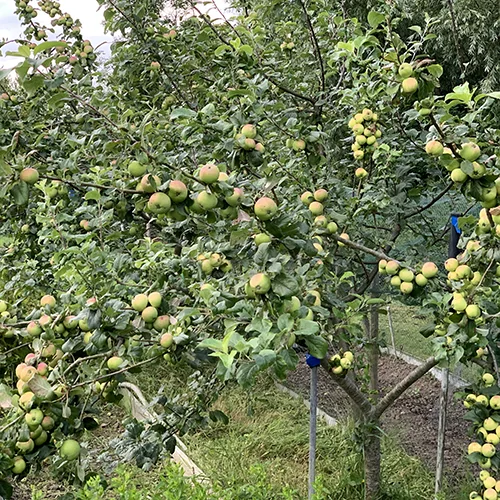
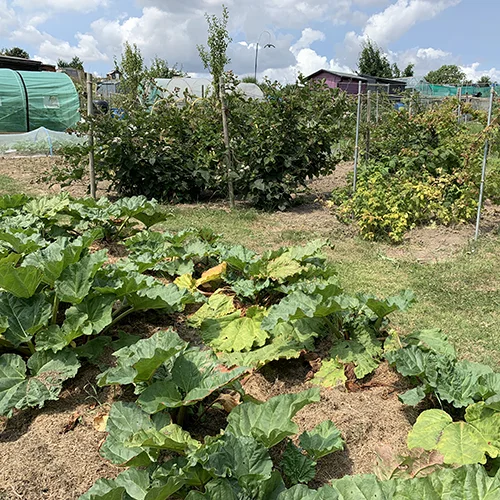
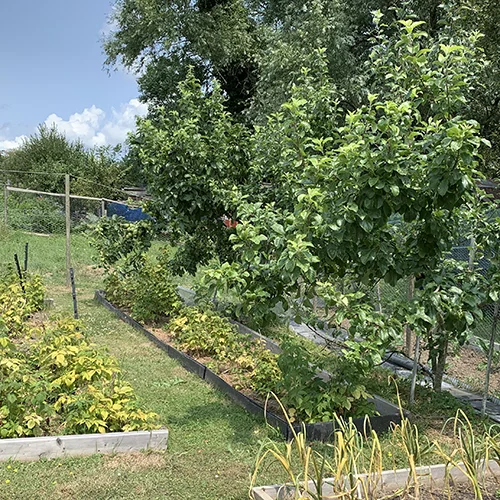
We planted a pair of apple trees around 15 years ago, and these provide a very good crop of cooking apples that we freeze to use throughout the year. We also have several blackberry bushes that are grown along ropes between posts. They are a thornless variety, making them much easier to pick than wild blackberries. The only downside with thornless berries is that they are not as sweet as wild ones.
Three years ago we planted two pear trees which are now starting to produce a good crop of fruit and last winter we planted a damson tree which should start producing fruit within the next few years.
We have an area with raspberry plants and also grew several varieties of strawberries.
Rhubarb is grown along the southern edge of the allotment where it gets plenty of sun throughout the year.
Vegetable and Beans
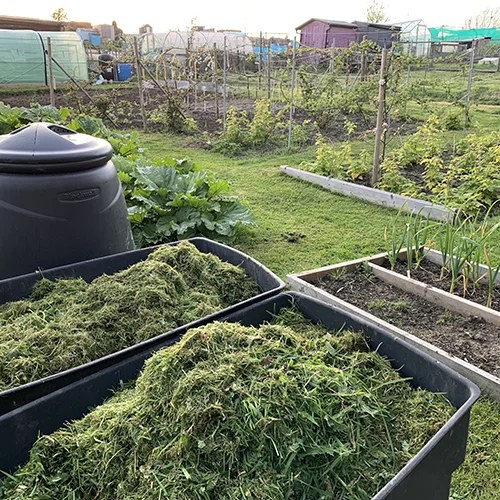
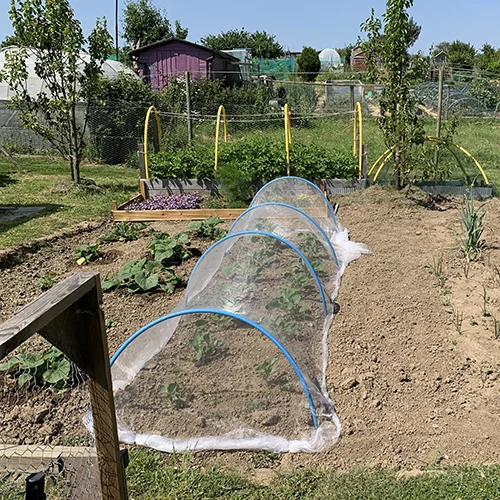
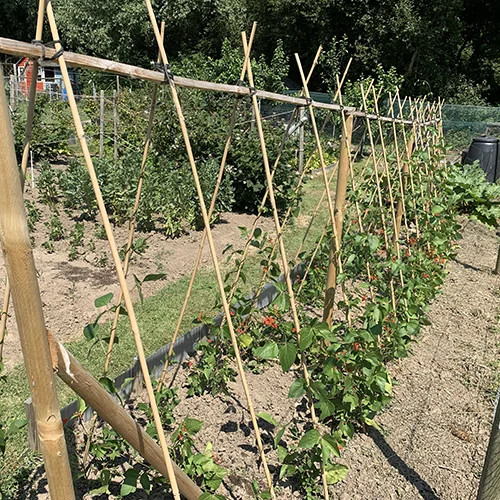
We currently grow onions, leeks, brussels sprouts, runner beans, broad beans, french beans, tomatoes, cucumbers, courgettes (zucchini), squash and other vegetables in the central area between the fruit bushes, pear trees and rhubarb.
For several years we tried to grow potatoes, but the soil has blight fungus, which is very difficult to remove.
Improving the growing season with a polytunnel
For many years while growing vegetables and beans, we used to plant the seeds directly into the soil, but in 2022, we decided to install a plastic polytunnel (grow tunnel) to enable us to start the seeds in pots earlier in the season and transplant them outside when they had grown large enough to survive outside.
The warmer temperatures provided by the polytunnel also allow us to grow tomatoes and cucumbers inside, and these have provided a good crop for the past couple of years.
Building the polytunnel tunnel
We initially ordered a 3-meter-long plastic tunnel with a metal frame, but an extra tunnel was sent due to a mistake with the order so we ended up with a 6 metre long tunnel. The first job was to clear an area at the top of the allotment, and after levelling the soil, we installed an anti-weed membrane and then placed old roofing slates across the ground to act as a floor and hard base.
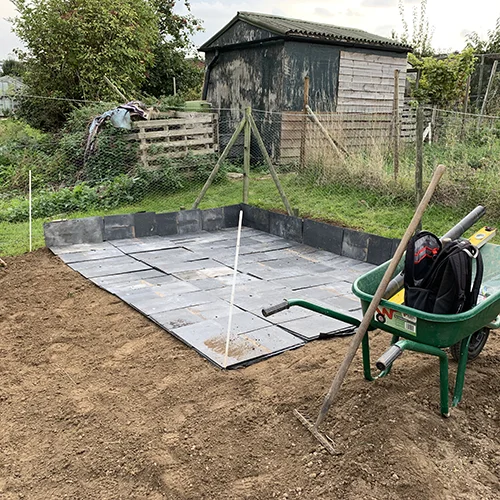
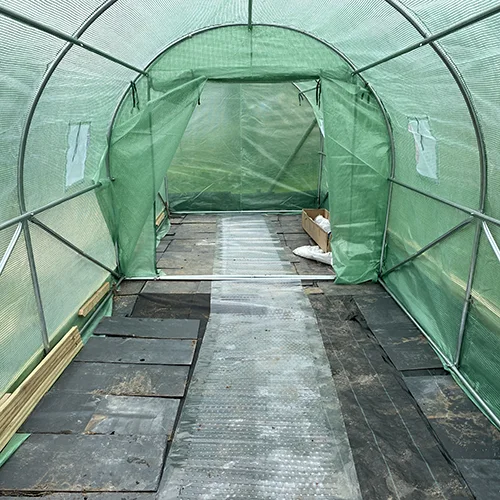
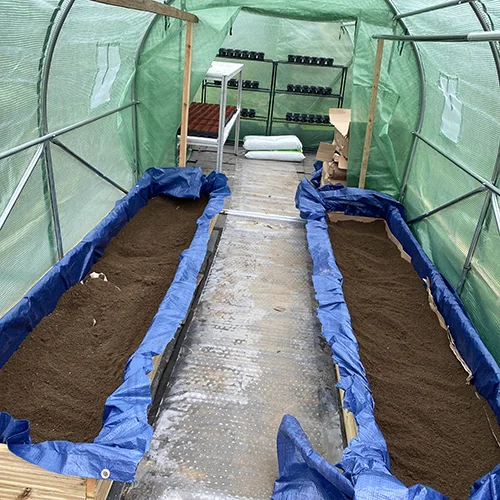
The metal frame was held down to the ground by hammering several 1-meter metal pipes into the soil, which were bolted to the base of the frames.
We combined the two tunnel frames and installed the plastic covers with a join in the centre to create a 6-meter-long tunnel. One end had a door with zips on each side. The zips were not very good quality, and they soon failed.
Inside the tunnel, we created a pair of 2.4 meter raised beds and built a table to hold smaller pots and seed trays.
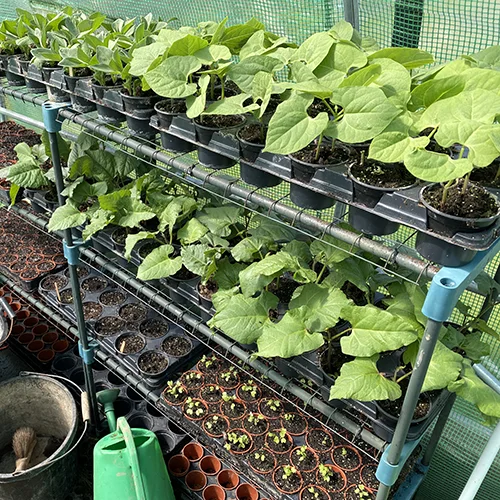
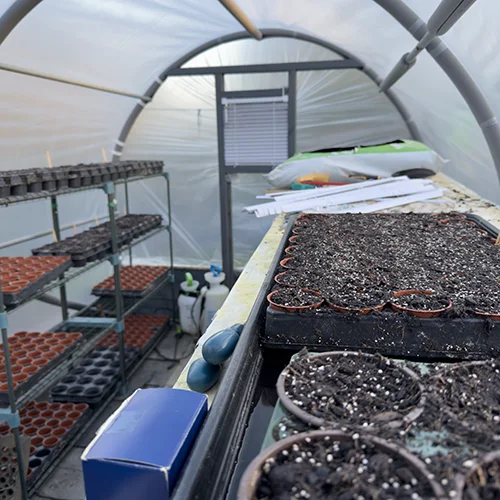
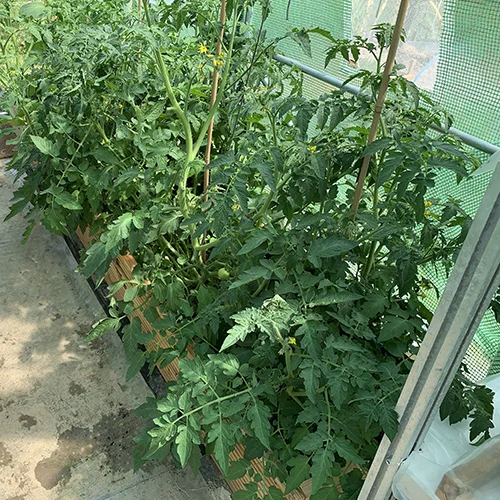
Water sources
For many years we collected rainwater into two 240-litre water butts at the bottom of the allotment, but after installing the tunnel, we needed a source closer to the tunnel. The council provide water along the edge of the road, but this is around 70 meters (220 feet) from our allotment, making it inconvenient to carry watering cans from the council supply to the tunnel.
We decided to install another pair of 240-litre water butts outside the polytunnel at the top of the allotment. To keep the water butts filled we use a 25-litre containers which we fill and transport using a wheelbarrow to the water butts. It can take up to 20 trips to fill the containers; in the summer months, we need to refill them every few weeks.
In the winter months, the top of the allotment has a natural water spring that runs across the soil and keeps the ground very wet and muddy. In the summer, we tried to dig a well to 2 meters until we found water and installed a pipe with a filter to try to act as a new source, but we soon found that the pump could only half fill a watering can before needing to wait several minutes to pump it again.
We plan to install a 12v compact water pump in the well and have a controller to run the pump when water is available. The pump will be powered by a solar panel and battery.
Winter Storm Damage
The area often gets high winds and storms from the east and west, and in the past few years, this has resulted in the trees behind our allotment falling, including some that have landed on our shed and fences.
The storms in the 2024-2025 winter badly damaged our polytunnel, requiring it to be repaired before we could use it again.
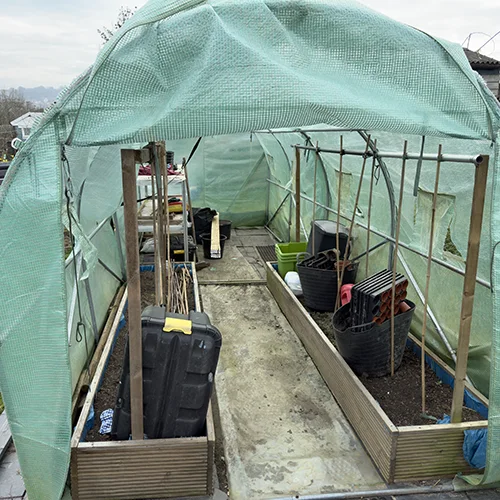
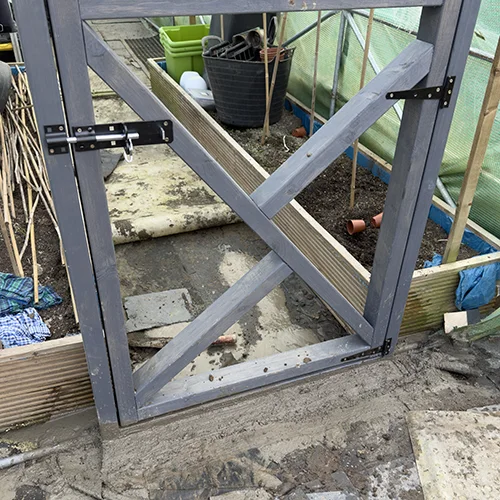
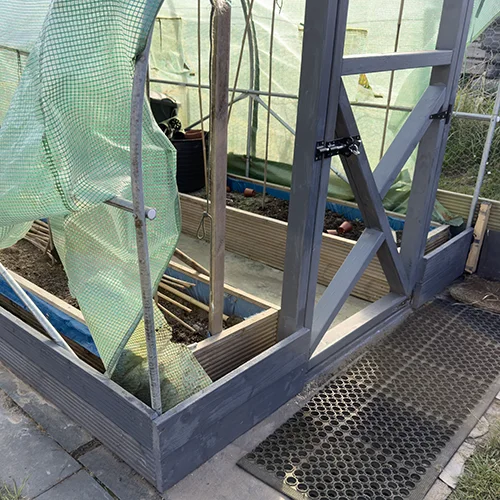
To rebuild the tunnel, we decided to add a wooden door an air vent/window and a window at the far end. The tunnel was covered with thicker and more durable plastic. To protect the plastic sheet from the metal frame and bolt heads which wore holes through the old plastic sheet, we covered the frame pipes in foam insulation. We are not sure how long this will last, but it's easy to replace if needed and stops any hot sports between the metal and plastic.
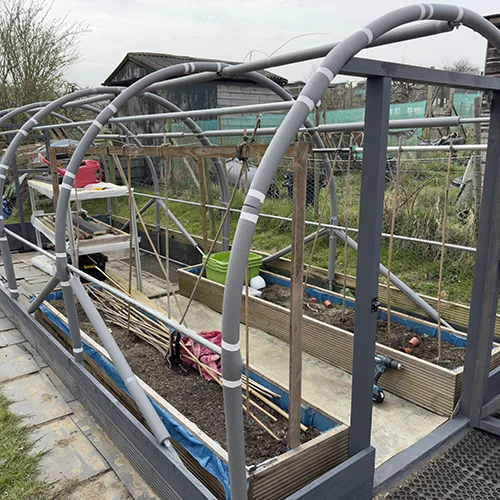
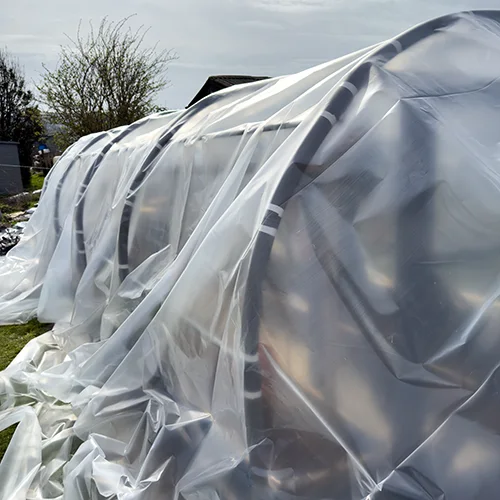
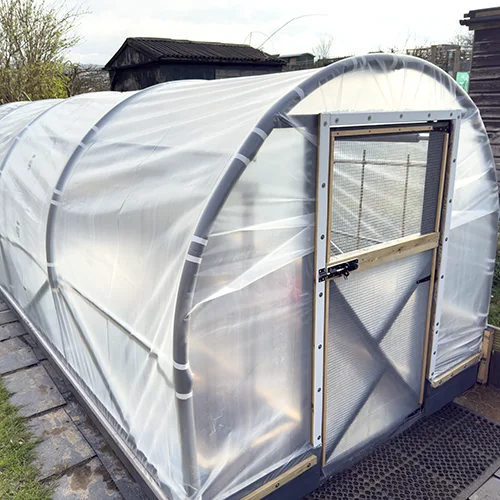
Plans to add more tech to the allotment
We are currently working on a project to add remote soil monitoring to our polytunnel using soil moisture sensors connected to a Raspberry Pi Pico and a Lora radio module.
The receiver module will send moisture and temperature sensor data to our home, which is approximately one mile away. The Raspberry Pi Pico with WiFi will transfer the data to our MQTT server to use with Home Assistant. This will allow us to see when we need to go out to the allotment and water the plants.
Initial tests show that a reliable data link can be maintained using 3mW of power with the supplied antennas, but with higher-gain antennas, we will be able to reduce the power output further.
I will add a blog post for the monitoring project when all the parts to build the modules have arrived and its installed and working.
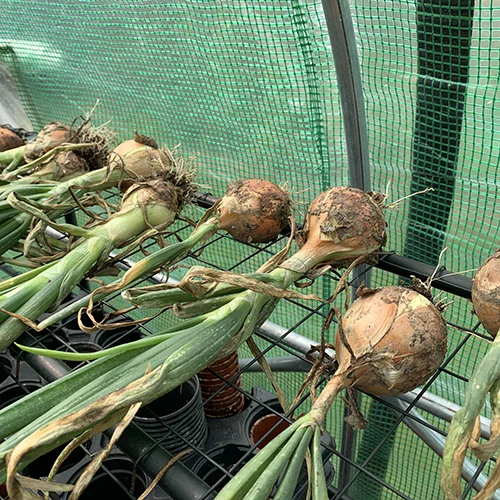
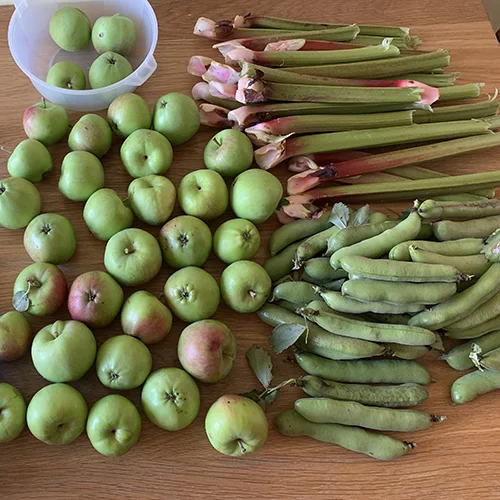


Comments